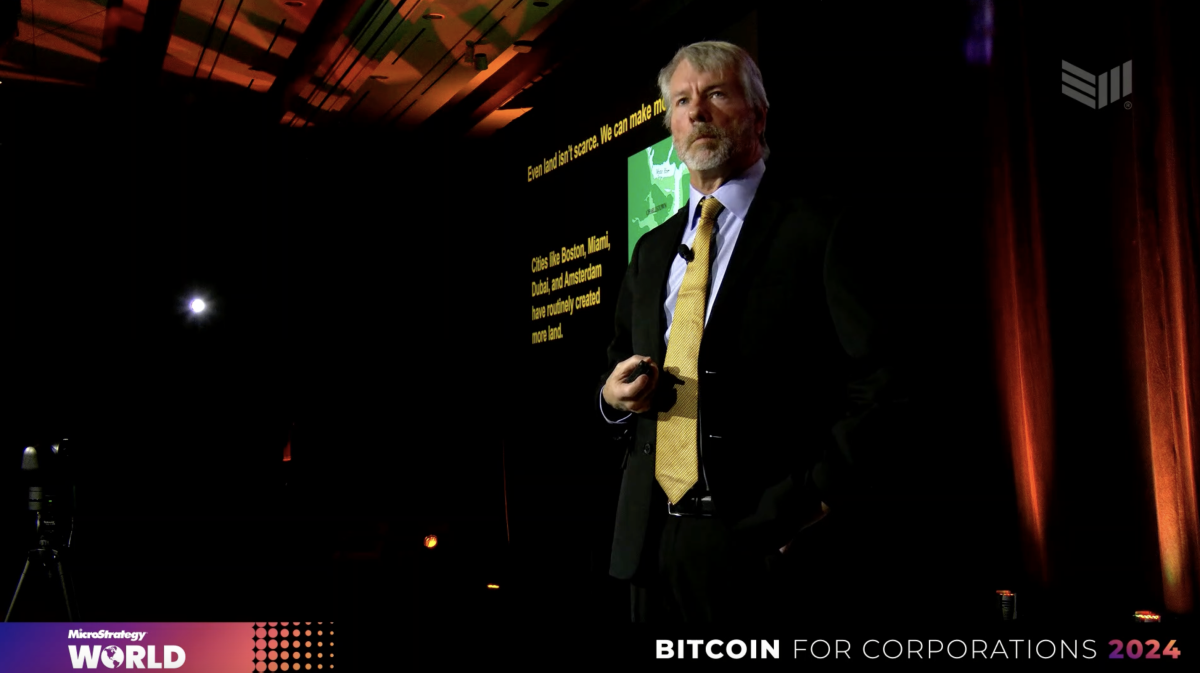Op Ed: As Cash Fades, Will Bitcoin Keep Protest Alive in the Surveillance Age?
Over the past five years, the art of protest has evolved. Authoritarian governments are increasing their ability to monitor crowds, but individuals are fighting back. Hong Kong gives us a glimpse of what protest could increasingly look like in the surveillance age. Rising up in the hundreds of thousands against a proposed law that would violate their freedoms and sovereignty, Hong Kongers are taking to the streets behind masks to confuse facial recognition systems. Protestors are deleting WeChat and Taobao to coordinate virally and quietly, shielded by Virtual Private Networks (VPNs).
But for those who wish to optimally obscure their movements from the data-thirsty eyes of the surveillance state, masks and VPNs aren’t enough. Cash is still the privacy king. Hong Kongers purchase burner SIM cards with cash to join Telegram protest coordination groups without disclosing their everyday identities. Students top up public transport cards with cash, instead of using their normal ID-linked Octopus cards, to prevent the authorities from knowing that they’re exiting the metro at demonstration points. But how much longer will clever tactics like this be an option?
Cash is disappearing. Only an estimated 8 percent of all daily global financial transactions are done with paper or metal money, a number that can be expected to sink asymptotically to zero over the next decade. Governments often talk about national infrastructure agendas to meet by 2030, but, in a world running entirely on digital money, pro-democracy protestors will need to prioritize a different kind of goal: How to cover their tracks.
In urban environments — where mass protests are most likely and most effective — governments simply need to load everyone onto public transportation systems and then turn off the ability for them to use cash to pay for those systems to easily control and track public movement. Consider what’s happening in countries like Estonia, where the government is trying to make public transportation free. A noble goal, certainly, but to take advantage of this service, riders must verify their identity with a personalized smartcard, allowing the authorities to track their movements. Perhaps this is not a concern in democratic Tallinn today, but a few hundred miles away in authoritarian Minsk or Moscow, individuals have every reason to worry about a regime that can watch protests as they materialize in real-time and stop them before they become a threat.
Watched by Our Apps
The Chinese government uses super-apps like WeChat to track citizens even more carefully, combining payment and movement data with social media activity and texts and calls to map, censor, predict and steer the behavior of crowds. And despite being less panoptical than WeChat, Western social media platforms are evolving in this direction and experimenting with payment functionality. At launch, it appears likely that Facebook’s Libra currency will only work with custodial, ID-linked wallets, giving users Venmo-like ability on WhatsApp and Messenger but also giving system administrators new financial powers. If Facebook succeeds with this plan — and betrays or stalls its white paper promise to provide permissionless finance — the newfound spending ability of hundreds of millions of people could be linked to or restricted by the opinions and friends they share on social media.
It’s entirely possible to imagine Americans and Brazilians and Indians trading their privacy away for convenience, creating their own path to a cashless world where it’s extremely difficult for citizens to protest, mobilize and hold governments accountable. In a world where WeChat and Libra-like systems may, in the course of the next five to 10 years, gain dominance over virtually all urban payments, we’re going to need a plan B.
Making a Plan B
Decentralized and private payments are a necessary innovation for a digital future where we retain our civil liberties and personal freedoms. Bitcoin gives us the blueprint for a global payment network that can protect our financial behavior, rather than serving it up on a silver platter to corporations and governments.
Currently, Bitcoin’s infrastructure is basic but growing around the world. Increasingly, people living everywhere from Latin America to West Africa to Southeast Asia can receive bBitcoin payments without needing to link them to a bank account or state-provided ID, and quickly turn them into local cash. This will start to have a big impact on cross-border payments, remittances and even foreign aid, but the Bitcoin network won’t be able to meaningfully challenge the WeChat-Libra surveillance state until users can easily do micropayments and have them accepted by mainstream merchants.
Second-layer technology like the Lightning Network does promise privacy-protecting micropayments, maximally disconnected from your traditional identity. Consider a world where you can use your smartphone to touchlessly pay for public transport (to go to a protest) or buy something on Amazon (perhaps a face mask), without disclosing your identity. Bitcoin and Lightning creates the technological platform to do this, in a way where payments aren’t censorable, and without needing a bank account. Given the global trends of disappearing cash and increasing surveillance, that day can’t come soon enough.
Big Brother seeks to capture your daily behavior, tracing your micro-activity and steering you toward becoming loyal and patriotic. The less information we leave behind, the harder it is for Big Brother to work. Bitcoin and Lighting crack the door open for a world where we can transact without leaving such a massive digital footprint. But if we don’t take the right steps today, Bitcoin’s promise may fade.
Lightning is far from where it needs to be, in terms of usability, capacity, public awareness and commercial interest. There aren’t enough companies building on Bitcoin and Lightning; not enough academics and students studying it; not enough educators teaching it; not enough merchants accepting it; not enough people exploring privacy-preserving cryptocurrency alternatives like Monero and Zcash; not enough philanthropies and foundations funding projects in this area; and not enough corporate and public sector leaders taking financial privacy seriously.
If we don’t find a way to make private mobile payments a global reality, then the inspiring tactics used by today’s Hong Kongers won’t work as we go deeper into the cashless future. If we can’t effectively protest and pressure governments, the flame of democracy may burn out for good.
This is a guest post by Alex Gladstein. Opinions expressed are entirely his own and do not necessarily reflect those of BTC Inc or Bitcoin Magazine.
The post Op Ed: As Cash Fades, Will Bitcoin Keep Protest Alive in the Surveillance Age? appeared first on Bitcoin Magazine.









